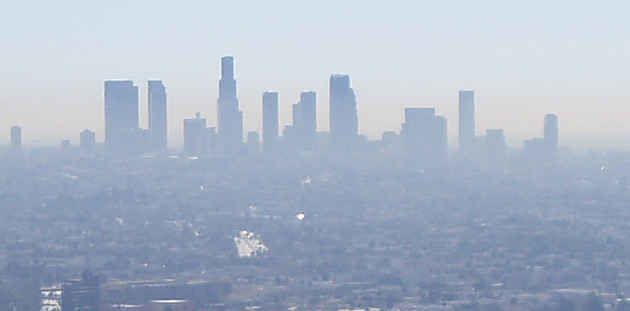The Trump administration Tuesday morning released a Final Rule for new U.S. standards that will relax emissions and fuel economy requirements through the middle of the decade.
The so-called Safer Affordable Fuel Efficient (SAFE) rule closely resembled what was leaked in January—requiring an approximately 1.5% annual improvement in the fleet average from 2021 through 2026, with a similar framework for credits.
The rule, replacing the 5% annual increases set by the Obama administration as aggressive moves to combat climate change and reduce oil dependence, "strikes the right regulatory balance that protects our environment, and sets reasonable targets for the auto industry," according to EPA administrator Andrew Wheeler.

EPA Acting Administrator Andrew Wheeler
It applies a similar 1.5% increase to the annual fleet average for automakers, as determined by a Corporate Average Fuel Economy (CAFE) framework that’s mostly carried over.
The result, by the middle of the decade, will be dramatically relaxed rules for fuel efficiency. By 2026, the new rules would change the required average from 46.7 under the current Obama-era rules to 40.4 mpg.
Those rules themselves don’t relate directly to the average mileage gas mileage ratings of new vehicles, as they include a credit framework of “off-cycle provisions” that still gets included in the calculation. To compare, in 2018 the OEM CAFE requirement was 30.0 mpg, but the actual “real world” EPA fleet average mpg calculation was 25.1 mpg.
The new rule also carried forward the current CO2 targets that are set by vehicle footprint, allowing light trucks more leeway than passenger cars.
The requirements were jointly written by the U.S. Environmental Protection Agency and the National Highway Traffic Safety Administration, the two agencies that currently oversee different—but coordinated—sets of regulations for emissions and fuel economy, respectively. They’ve reportedly been waylaid at the White House Office of Management and Budget (OMB).
Under such a system, there would be incentives for automakers to continue to make hybrids or plug-in hybrids but little incentive to sell electric vehicles.
Conflicting analyses on whether this is a net positive for families
The EPA claims that the new rules will cut the prices of future new vehicles by about $1,000 and reduce traffic deaths—although the calculations that it has used to arrive at both conclusions have been highly controversial, and environmental groups have cited numbers suggesting more will die or be sickened by additional pollution.
A Consumer Reports analysis has found quite the opposite—that the relaxed rules will cost American consumers $300 billion, with an average increase of $3,200 in fuel costs and $2,100 average extra net cost per vehicle over that time. It underscored that every $1 in fuel-saving technology installed in new vehicles up front results in $3 in saved fuel over the lifetime of the vehicle—a figure that Green Car Reports has seen mentioned by auto-industry suppliers.

Los Angeles Smog
The U.S. and the world are currently battling a pandemic in which mortality and severity are at least somewhat related to lung health.
“There would never be a good time for an idea this harmful, but it is breathtakingly opportunistic to impose health and economic burdens on the American people while we are battling a pandemic,” said Environmental Defense Fund president Fred Krupp.
The original plan proposed by the Trump administration—to effectively freeze emissions and fuel economy requirements at 2020 levels—was not well-received by carmakers or consumers. In addition, the Governors of 23 states, including some states that will be considered battleground states in this fall’s election, sent a letter opposing the move.
Automakers are split on this
Those states will ally to challenge the final rule, as well as the administration’s attempt to revoke California’s authority to regulate tailpipe emissions—which allows the zero emissions vehicle program and associated electric-vehicle mandate. Ford, Honda, Volkswagen, and BMW have united to voluntarily comply with a higher standard for their vehicles in the meantime.
Other automakers, together with the Auto Alliance, have generally supported the idea that targets shouldn't be frozen but instead relaxed—largely due to the fact that vehicle mix has skewed far more toward light trucks than envisioned when the Obama-era framework was devised.
General Motors stands somewhat apart from both groups in that it has backed the idea of a national electric-vehicle mandate, modeled after California's, to supplement relaxed targets for other vehicle types.
The new rule confirms such an electric vehicle future isn't coming to Middle America, under any kind of volume requirement to automakers, anytime soon.
Meanwhile, with California's mandate hanging in the balance, and what appears to be a major contraction in the world's auto market after this spring, that leaves automakers with some hard decisions to make about whether U.S. fleets will electrify with the rest of the world.













